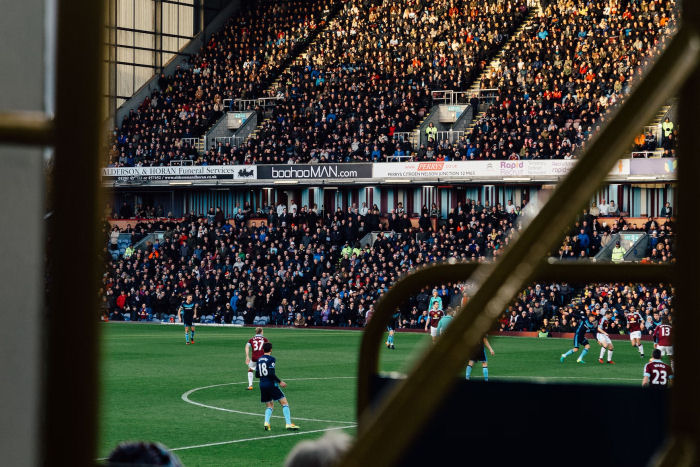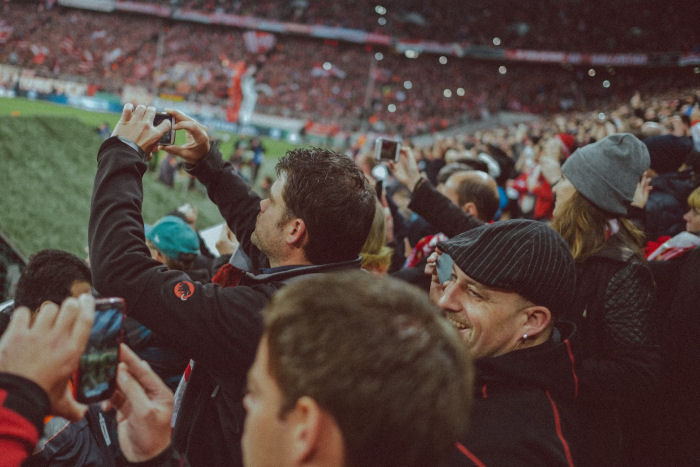 Photo by Unsplash
Photo by Unsplash
The English Premier League is one of the biggest football leagues in the world. Apart
from teams in the EPL, there are clubs in the Championship, National League,
League One, and League Two. Plus, many amateur league clubs don’t make it into
mainstream media. Beyond the thrills and entertainment, the world of football in the
UK is a business field. The average spectator can find the best UK online casino with
Wagering Advisors to stake and win money.
Meanwhile, the intricate relationship between UK clubs and their sponsors goes
beyond financial backing. Instead, the partners contribute capital and expertise and
facilitate global reach. Let us delve into the complex dynamics of these relationships
and how they shape UK soccer clubs' overall success.
The Evolution of the Partnerships
Sponsors are an integral part of any business, including football. From the beginning,
it was primarily a financial agreement. Sponsors like Etihad Airways, Standard
Chartered, and Emirates provide funds. In return, the football clubs display the
sponsor’s logo on their jersey or within stadium facilities. However, due to the
changing times, the traditional approach to sponsorship is changing to a more
holistic approach.
As UK clubs grew in popularity worldwide, the sponsors didn’t just desire visibility.
Both clubs and sponsors grew more ambitious and pursued partnerships aligned
with their values, visions, and target audiences. In a way, we can even trace the
boom in bets on athletic events to the activities of football sponsors. Through their
long-standing and robust connection to professional football clubs, websites offer
football wagers to fans. Sadly, most people still struggle to find a legitimate online
site. If you fancy your luck, read the
detailed PlayUK Casino review for
the best sites to visit. Instead of passive contributors, sponsors became active
participants in the club’s journey.
Today, the football club sponsorship landscape is more diversified than ever before.
Previously, only traditional industries like automotive and banking played a
significant role. However, tech companies, airlines, and commerce giants contribute
to a more dynamic image. This diversification brings in various income streams,
some of which we will discuss below.
The Financial Implications and Mutual Benefits from Such Collaborations
Did you know that, in 2019, the FA generated a turnover of approximately
468 million British pounds, mostly through broadcasting rights, sponsorship, and licensing? As
much as the relationship between football teams in the UK and their sponsor is not
strictly financial, we cannot exclude it. Above all, it culminates in mutual benefits.
Below are ways the parties benefit from the collaboration:
Income Stream and Investment
One of the major income streams of a football club is sponsorship. In the same way,
it represents a strategic investment for the sponsor. The financial commitment is
used for facility upgrades, player transfers, and more. Likewise, the sponsors
leverage it to access a target audience.
 Photo by Unsplash
Global Exposure and Brand Valuation
Photo by Unsplash
Global Exposure and Brand Valuation
Sponsorship deals through
televised matches provide much-needed exposure for
clubs. The club and its sponsor can expand their market reach and customer base
by appealing to different fan bases. A successful partnership between a club and a
sponsor makes the former more attractive to bigger sponsors. At the same time, the
sponsor has a unique opportunity to create a positive brand image.
Merchandising and Licensing
A merchandising agreement is incomplete without a sponsor’s backing. The club
makes more revenue through sales, and the partner capitalizes on the visibility of
sales. Besides monetary provisions, the partners collaborate on technology,
marketing strategies, and other features.
Improved Fan Engagement
The ultimate aim of the agreement is to increase fan engagement. As a result, the
partners use events, exclusive events, and promotions to reach out to the fan base.
The collaboration further provides an opportunity to demonstrate the commitment to
social and corporate responsibility, enhancing the corporate image of all the parties
involved. Some ways they improve fan engagement include:
- Behind-the-scenes access to exclusive events to promote a sense of inclusivity.
- Digital campaigns, quizzes, and meet-and-greet events from football members.
- Live player Q&A sessions for players.
- Customized fan merchandise.
- Community outreach programs.
How Sponsors are Shaping Branding and Revenue Streams of UK Football Clubs
The relationship between UK football clubs and sponsors plays a major role in the
clubs' branding, revenue, and overall success. Some popular ways this is obvious
are:
-
Logos on the jersey and kit are iconic representations of the sponsors, a
feature that contributes to the club’s global identity. Similarly, partners with
stadium naming rights create lasting associations.
- Various campaigns capture fan attention, creating a sense of belonging and
engagement.
- Shirt sponsorship provides a stable income stream for meeting financial
obligations. Additional deals for training kits and other club properties help
clubs diversify their income stream. Plus, some sponsors pay for media
collaboration.
- International partnerships take the club’s image outside its domestic
boundaries. It attracts a global audience and fans who wear branded
merchandise and represent the club.
- Sponsorship money allows teams to acquire players, enhancing
competitiveness and creating long-term sustainability.
Conclusion
The relationship between UK clubs and their sponsors is beyond monetary. Multi-
faceted is the best word to describe it. The partnership contributes to branding,
revenue stream, and the team's overall success. As long as the parties share a
common goal, value, and commitment to the fan experience, it is a win-win situation
for everyone involved.